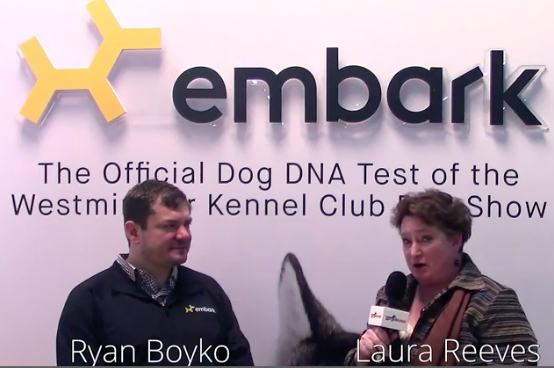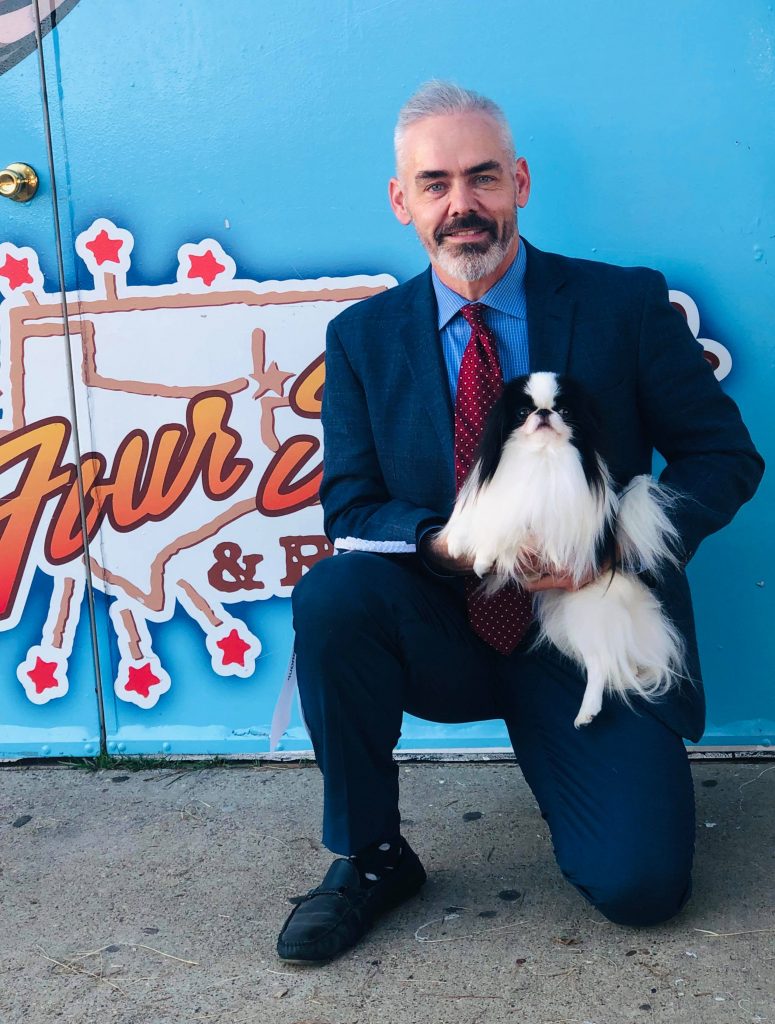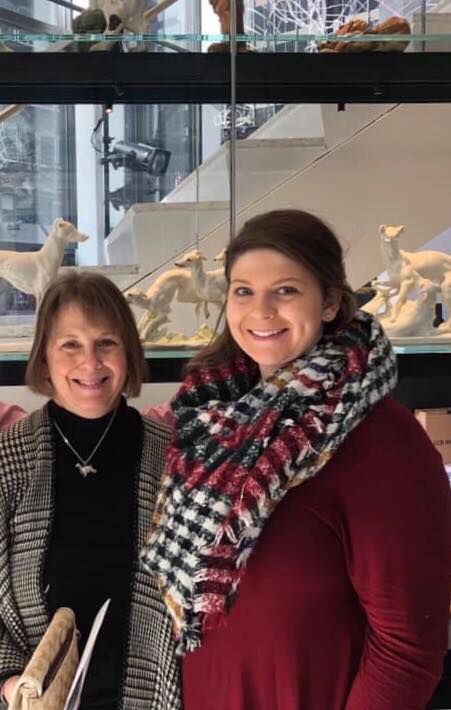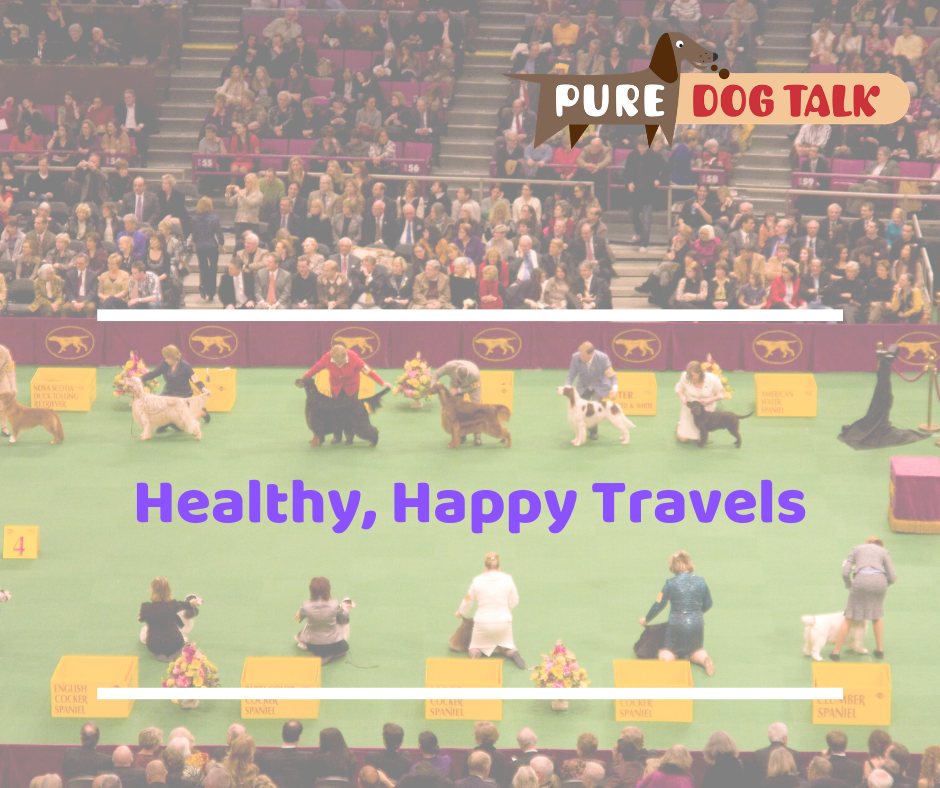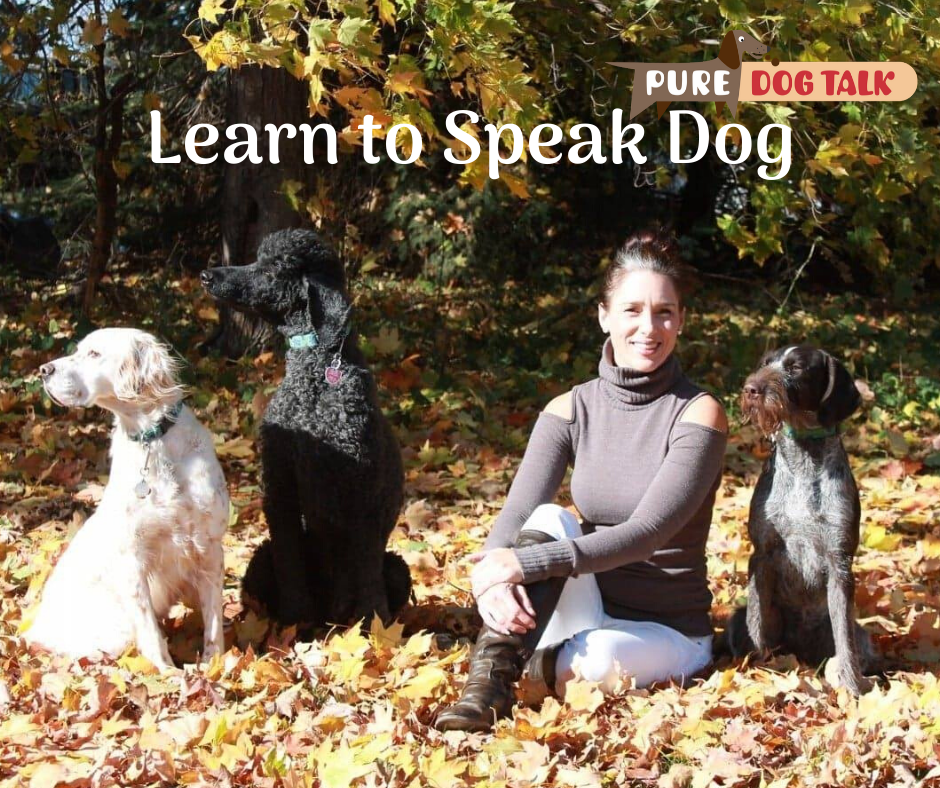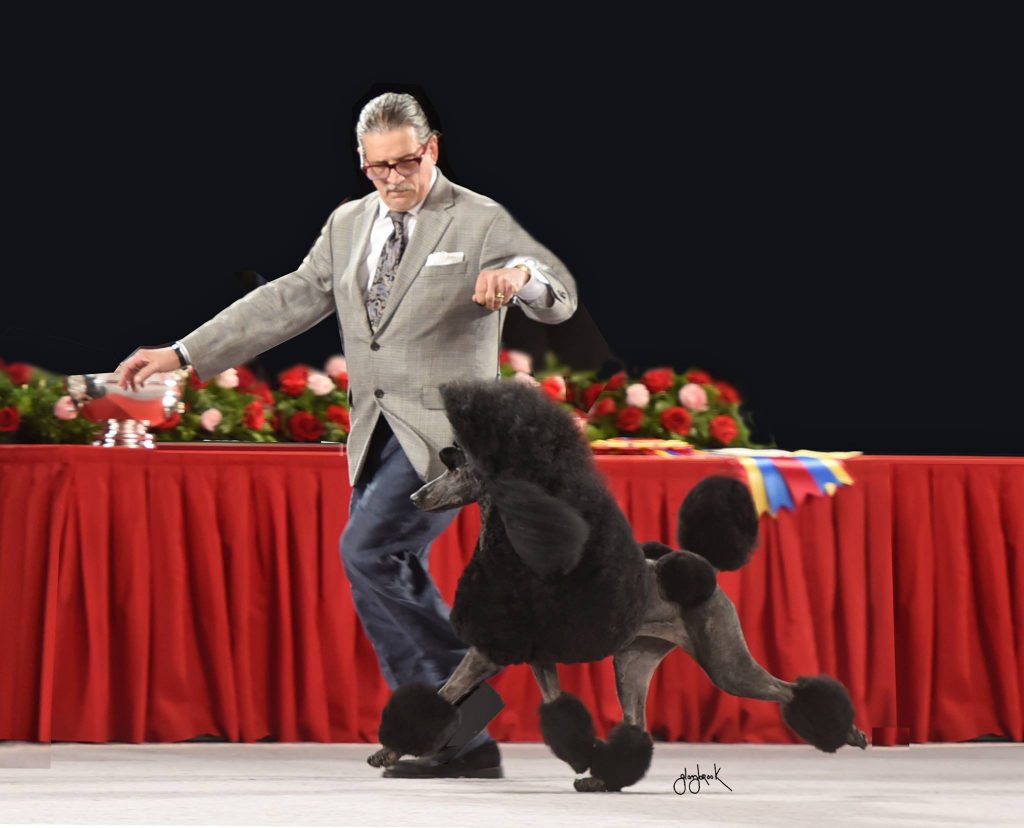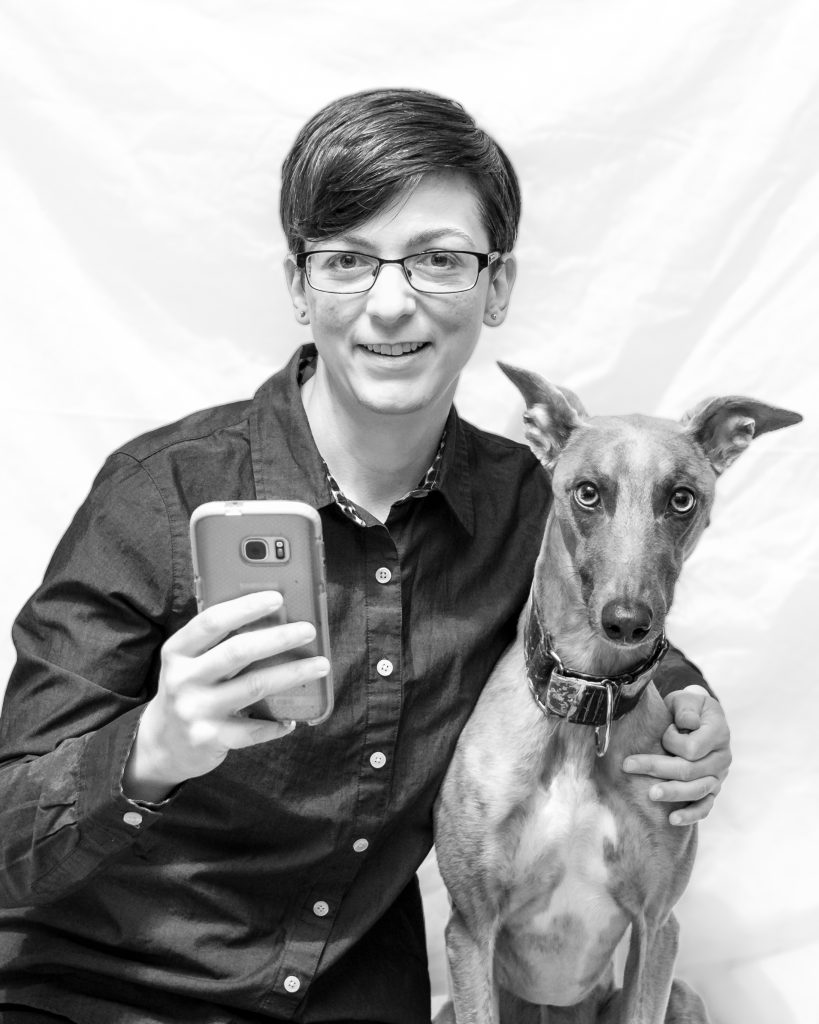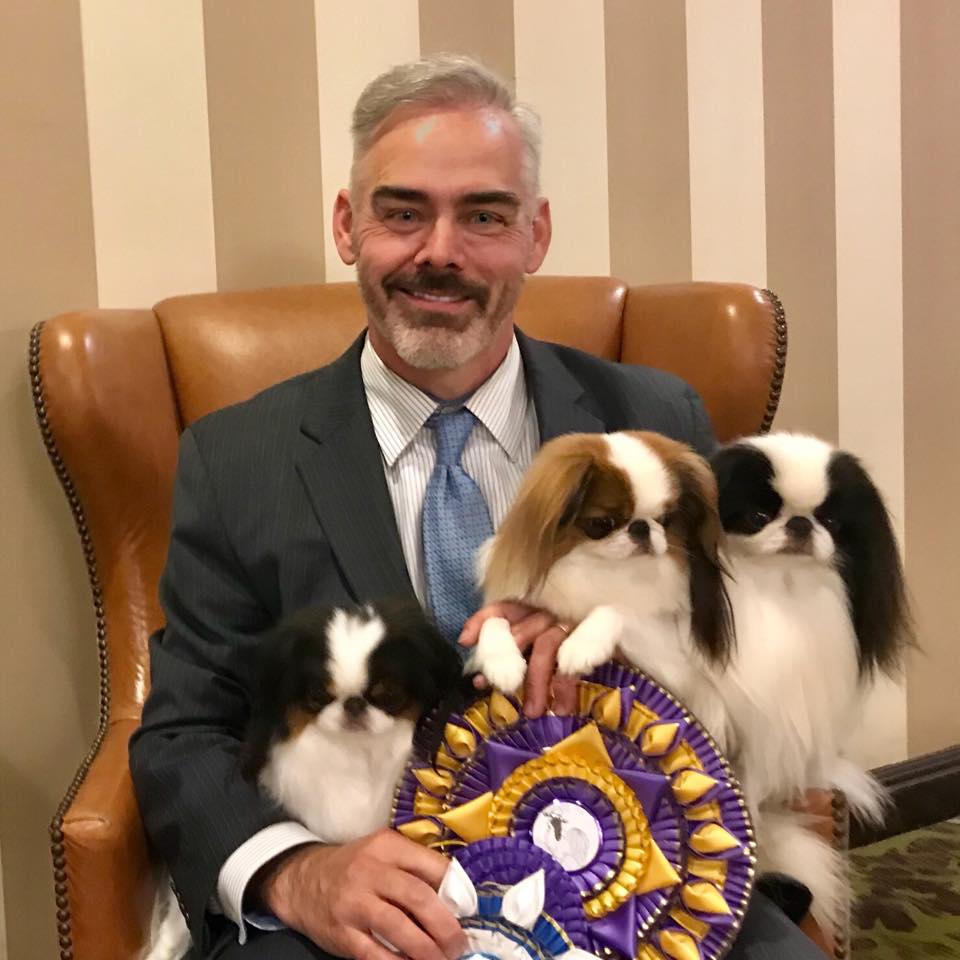Posts by Laura Reeves
367 – Dog Breeding is Art AND Science with DNA Testing
Dog Breeding is Art AND Science with DNA Testing
Ryan Boyko, co-founder and CEO of Embark, shares specific information about what DNA Genetic Testing can and cannot tell us and how it has exploded since the mapping of the canine genome 15 years ago.
“We can test for almost 200 disorders that affect most breeds,” Boyko said. “We can come up with a genetic coefficient of inbreeding, which is exact to the individual dog versus a “pedigree” calculation. We can be predictive now, also, on inbreeding coefficient and traits.”
Art AND Science
“There’s always going to be an art to dog breeding,” Boyko noted. “That’s the magic. We’re never going to take that away. I’m never going to know as much about your individual breed as you do.
“The best breeders have been doing this for decades. And they’ve been producing healthy dogs that are champions. We are driving awareness of how the tools we offer can fit into a breeding program.”
Academia to Application
“I came out of an academic background,” Boyko said. “My brother helped design the original dog array. We use data to discover new things. Can use data from the array combined with phenotype data to discover new genes. Over the next five years I think we’ll be able to learn about more complex traits like cancer.”
Genetic testing helps scientists learn more about the underlying genes for complex disorders affected by multiple genes and environmental impacts, Boyko noted. Genomic risk scores are a tool in development to utilize this information.
“When traits are affected by lots of different genes, this tool allows breeders to learn the probability of this dam/sire to produce a specific disease or trait and compare to other combinations,” Boyko said. The Doberman Diversity Project episode discussed this in more depth.
Another exciting field of discovery for the future is epigenetics, which are the markers that can turn genes on and off. Learn more here and here.
366 – Winning the Messaging War with Better Marketing
365 — Junior Showmanship from Competing to Judging
Junior Showmanship from Competing to Judging
Marti Day and Sarah Congleton are a mother-daughter junior showmanship judging juggernaut. Sarah and her brother Tanner started showing in juniors in 2005. Marti was the support person and chauffer. Mother and daughter both judged the huge junior showmanship competition at Orlando before the AKC National championship.
The family traveled to dog shows regularly, putting 250,000 miles on the family Suburban’s odometer. Sarah and Tanner competed in 4-H, juniors and regular breed competition, eventually working for handlers and breeders.
“We were so fortunate to work with top notch breeders,” Marti said. “We had people who offered us dogs and helped the kids learn how to groom. Parents should never do work for the juniors.”
Marti said she was rarely worried about her children traveling with breeders and handlers. The siblings generally were together, Marti said, adding “the Dog show world, in terms of children, really look after each other in an incredible way.”
As a parent, Marti expressed pride for her children’s success.
“The sport has made them outspoken, compassionate, understanding, motivated, organized young adults,” Marti said.
Sarah observed that junior entry numbers are decreased in recent years and throughout the purebred dog fancy “more has to be done than just saying juniors are the future of the sport.”
Mentorship along the lines of “Jody’s Juniors” and building a “dogmanship” program are some of Sarah’s emphasis.
“It’s not just running around the ring in a Saint John’s suit, we need to teach basic animal husbandry,” Sarah added.
Marti and Sarah both emphasized safety in judging junior showmanship, as well as “who would I trusty MY dog to.”
“I like to see the juniors and their dog relax. Everybody on edge isn’t good for either one. And, don’t be a prima donna. I want to see the rapport between you and your dog,” Marti said.
364 – Healthy, Happy Travels to Westminster Kennel Club
Healthy, Happy Travels to Westminster Kennel Club
Dr. Marty Greer provides thorough and thoughtful advice for keeping your dog healthy and happy on the way and at the big show.
Preparing the Dog
- Enter the dog.
- Assure the entry has been accepted.
- Arrange travel.
- Have an appropriate travel bag or crate, depending on if the dog will travel in the cabin under your seat or in cargo, with or without you on the airplane.
- Do NOT try to pass the dog off as an “ESA” – Emotional Support Animal if this dog is not certified as such. There is current proposed legislation that will restrict the use of this term as it has been overused and misused by many travelers.
- A Certificate of Veterinary Inspection (CVI) is required for all animals crossing state lines. This applies whether you are driving or flying the dog to the destination. Most of the time, you will not be asked for this document. However, if you are without it, your travel plans may be interrupted. This must be issued by a veterinarian who is “Accredited” by USDA. Not all Veterinarians are accredited so be sure you have a veterinarian who can sign this paperwork.
- A current rabies certificate is also required for all dogs traveling.
- A “Letter of Acclimation” if the dog is flying in cargo. This will reflect the temperatures the dog has been acclimated to prior to travel. This is issued by your veterinarian.
- Microchip and identification collar with your current cell phone number.
- Anti-anxiety medication if indicated. Acepromazine and Benadryl/diphenhydramine are NOT anti-anxiety medications. Alprazolam, trazodone, or gabapentin may be suitable if indicated and prescribed by your veterinarian.
Preparing the Equipment
- Make a list of the least amount of equipment and supplies you can manage with. Consider shipping these ahead to the hotel.
- Arrange to rent equipment
- Travel bag, leash and collar. A quiet toy to keep your dog busy and avoid annoying fellow travelers.
- Travel crate, absorbent material, leash, collar, ID, small bag of food enough for one meal, bowls (the kind that flatten are easiest) and a toy to keep your dog busy.
Preparing you!
- Buy tickets for admission to Westminster.
- Make flight arrangements. Be sure you include the dog(s) on the reservation.
- Make hotel reservations. Be sure you include the dog(s) on the reservation.
363 — Reactive Dogs: Learn their Language
Reactive Dogs: Learn to Speak “Dog” for Better Outcome
Kristin Sandstede, Big Moose Dog Training, is back with some great conversation about “reactive dogs.” We narrow the topic down to reactive, non-aggressive dogs and learn to speak “dog” for some great solutions.
Dogs speak in body language, Sandstede reminds us. They use “distance increasing and distance decreasing body language.”
For example hard, sharp barks, growls and showing teeth are distance increasing signals. Dogs when they play bow and offer “circle wags” are telling their playmates to come closer. Drilling down on that behavior more, Sandstede observes that a “hip check is friendly, a shoulder check is not.”
Reactive dogs are often just plain scared, Sandstede said.
“Many dogs learn that the best defense is a good offense, Sandstede said. “The big reaction saves them from having to get into interaction that makes them scared.”
Lack of early socialization, negative experiences and a second fear stage at around 9 months, can all cause the problems the dog is experiencing, Sandstede said. “You can do all the right stuff in the 0-16 weeks timeframe and still have 2nd fear period. It’s a real thing and it happens.”
So, if this is happening to your dog, your first move is to avoid the “threshold” that causes the reaction.
Going forward
“Don’t get after the dog,” Sandstede said. “While we’re embarrassed and don’t want our dog to act that way, all (a correction successfully does) is stress out the dog, create more fear/anxiety. Scared dogs don’t know what to do. Give them things to do. If you take away a behavior you don’t like, you have to replace it with a better one. The more time focused on what the dog does right, also decreases his stress level.”
Traveling to NYC
Folks traveling to Westminster Kennel Club with reactive dogs need to consider the high traffic, lots of noise, lots of people as potential triggers to the dogs fears.
Counter-conditioning to solve the underlying issue takes time. So the next best option is to manage the dog’s anxiety. Cut down on their external stimulation when possible and utilize products such as CBD oil, melatonin or lavender oil to reduce anxiety.
362 — Joseph Vergnetti: the Art and Science of Dog Breeding
Joseph Vergnetti: the Art and Science of Dog Breeding
“Breeding is Like a Recipe, You Need All the Ingredients On Hand”
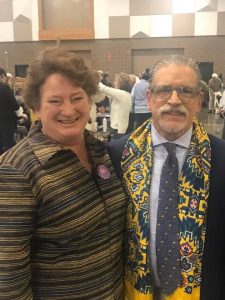
Host Laura Reeves and Joseph Vergnetti in Puyallup, Washington.
So says Joseph Vergnetti, master breeder at Dassin Poodles. Vergnetti talks about the presentation, line-breeding and outcrosses, and the differences in the varieties.
In partnership with Ellen Charles, Vergnetti has been voted Breeder of the Year twice by his peers and was selected Non-Sporting breeder of the year by the American Kennel Club. They have produced more than 300 champions across all varieties of poodles.
Starting Young
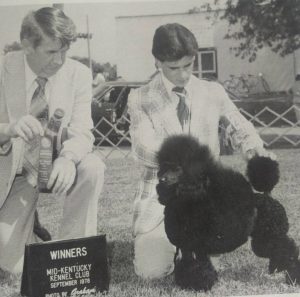 Starting with a toy poodle that he learned to trim by himself at 10 years old, Vergnetti has successfully bred Boxers, Great Danes and American Foxhounds as well. He apprenticed with professional handlers in his teens, including Ted Young Jr, then went to work for Wendell Sammet, Ale Kai poodles.
Starting with a toy poodle that he learned to trim by himself at 10 years old, Vergnetti has successfully bred Boxers, Great Danes and American Foxhounds as well. He apprenticed with professional handlers in his teens, including Ted Young Jr, then went to work for Wendell Sammet, Ale Kai poodles.
“Wendell was hardest worker in the world. Everything was very precise,” Vergnetti said.
It was during this late ‘60s, early ‘70s time frame, that the trimming and presentation style of poodles changed dramatically, Vergnetti said, with the “spray up” becoming more and more important.
“Today it is a little over-done,” Vergnetti said. “They are almost a caricature, way over the top. Hairspray and excessive presentation has taken over. In a way, I think poodles are a victim of their own beauty. There is a normal dog (construction) under all the hair. That’s very important.”
Differences in varieties
Miniature poodles are Vergnetti’s favorite, he said, adding that “Miniatures are smart. They’re the perfect size. They know what they like and what they don’t.” He noted that miniatures often have more work ethic than standards. They were originally truffle dogs and circus dogs. “They don’t take much (grief) from anybody.”
Breeding planning
When breeding dogs, you need to have all ingredients, like a recipe, Vergnetti opined. The Dassin program generally maintains seven or eight stud dogs and an average of 10 bitches… “It’s important to have the dogs you want in front of you,” he said.
The Dassin Farms facility features a four-story-tall barn for a kennel building, Vergnetti said, with 50-60 runs and 72 windows all around.
“We can see the dogs all day, every single day. We take hair off the puppies to see the bodies. You can see temperament. We evaluate them every day on their own,” Vergnetti said, which he adds is how they make decisions about which dogs to keep.
361 – Specialty vs All Breed Part 2: Identifying Solutions
Specialty vs All Breed Part 2: Identifying Solutions
Our experts are back to help us identify solutions to the dilemma of specialty versus all breed shows. Part one is available for listening here.
All breed shows offer a moderating influence on the extremes that can reign at specialty shows. They also enable judges and owners to see the quality of dogs presented at specialties.
“The ultimate learning tool for judges is to get your hands on good dogs.”
And, in a special opportunity, I had a listener contribute thoughts on this topic that I think are absolutely on point and applicable to this conversation. Welcome Tracy Dineley, Clandara Perm Reg, with her input.
“I just wanted to write to you after listening to your latest podcast as this topic has been on my mind for the last few years and I myself have spoken about it many times and have also written about it.
First let me give you my 411. I have been involved in purebred dogs since 1981 as a professional handler and breeder exhibitor. I have been breeding and showing Staffordshire Bull Terriers since 1984. I have bred more all-breed BIS dogs than any other breeder in Canada and more National Specialty winners in Canada than any other breeder. I have over 80 champions in Canada and the US.
It is my opinion that showing strictly or mostly at one or the other, specialties versus all breed shows is actually detrimental to any breed. It divides a breed, usually not for the better, in two directions. In some cases, it has divided breeds to the point that they almost end up looking like two different breeds.
All breed judges versus breed specialists have different priorities when judging. An all-round judge will judge the whole dog. They won’t focus on one thing. They take soundness and movement into the equation. They may even refresh themselves with the breed standard.
The breed specialist judge tends to focus on types or heads. They forgive movement flaws and sometimes forgive to the point that they will put up maybe a pretty or typey dog that is just plain unsound. They might even focus on things that are an issue in their own breeding program. It is not always the most balanced opinion.
In my breed, I have found that many breed specialists will interpret the breed standard to suit themselves. For instance, the breed standard calls for a level topline, but many breeders say that level doesn’t really mean level. I also find that many specialty winners cannot win at the all-breed shows at a high level. I think it’s usually because they are not sound enough. Just the same as some top-winning BIS winners who cannot win a Specialty. They are not typey enough.
In my opinion, we should all be striving to win under both judges. To have a dog that is correct and typey enough to win a specialty and sound structurally correct enough to win under all-rounders at all breed shows.
I think your speakers on the podcast were perfect for this topic. I think out of the three breeds, Staffy Bulls, Collies, and Bull Terriers, the Bull Terriers are the only breed that has it right. I believe you could take pretty much any specialty-winning Bull Terrier and do some serious winning at the all-breed shows even to BIS level.
I think the possibilities of creating extremes happen on both sides and therefore are detrimental to any breed. We need balance. We should always strive for the best to be somewhere in the middle of extremes but have the best of both worlds.
Thank you for your podcasts, I look forward to them every week!”
360 — Specialty vs All Breed Dog Shows
Specialty vs All Breed Dog Shows
In certain breeds, the judging of breed specialists and specialty shows draws higher entries and is of greater interest to the exhibitors than the day-in, day-out all-breed shows with which most of us are familiar.
In part one of this panel discussion, three exhibitors and judges from some of these breeds share their thoughts about why this is so.
“We wanted to take back ownership of our breed. Generic dogs were winning at all breed shows versus the details of breed type that breed specialist judges would reward.”
Our panelists are:
David Alexander, Bull Terrier Breeder,
Jason Nicolai, Staffordshire Bull Terrier Breeder
Marcy Fine, Collie breeder.
Bull Terriers, Staffordshire Bull Terriers, and Collies are all breeds in which specialties are the holy grail and all-breed dog shows are considered less important.
Take a listen to part one of this challenging conversation about the “why” and join us next week when we talk about the solutions. My thanks to Lorelei Craig, President of the Staffordshire Bull Terrier Club of America for arranging this panel of experts.
359 – “Space Whippet,” Insta Celeb, Provides Social Media Tips
“Space Whippet,” Insta Celeb, Provides Social Media Tips
Beth Gordon acquired a race-bred whippet after her mixed breed rescue developed IVDD (intervertebral disc disease). Kuiper the Space Whippet’s rise to fame on social media provides a blueprint for others to follow in promoting purebred dogs.
“I wanted a healthy dog I could do sports with. It’s ok to not want a project. We’ve spent as much as my college education on our older dog with health issues. I just didn’t want to have to do that again,” Gordon said.
“I decided we needed better influencers on this new-fangled thing called Instagram, Gordon said.” She wanted to do something that was informative, not just fluffy. A “space tree” in Salem, Oregon was the idea for the launch of Kuiper the Science Dog, Space Whippet.
In just a couple years, Gordon and Kuiper have acquired more than 150,000 Instagram followers and been to Kennedy Space Center for a photo shoot for the account.
Utterly shameless self-promotion makes all the difference, Gordon said. “Business cards cost $20 and people love to get them.”
“Even though the account name is space whippet, I get a lot of questions about his breed,” Gordon said. “I think it’s a good opportunity. The way you increase representation for anything is by showing it to people, not making a big deal out of it.
“When you’ve been fed this line there are so many rescue dogs, why don’t you have a rescue dog? My answer is that purebred dogs are not fungible with rescue dogs. If my choice was another rescue dog or no dog, I just wouldn’t get a dog. If you have specific things you want to do, you’re much better to get a breed designed for that.
“The general public doesn’t know there are so many things you can do with your dog. May not consider their dog trainable. Increasing awareness of the sports they can do is so important. Purebred dogs are not just for beauty, dogs are functional,” Gordon said.
358 – Dale & Jane Martenson: Touche Japanese Chin
Dale & Jane Martenson: Touche Japanese Chin
Master Breeders Dale and Jane Martenson of Touche Japanese Chin, have produced more than 500 champions in a very difficult breed. Dale shares invaluable, detailed advice for success.
Purposely bred dogs allow us to pick the dog that best fits our lives, Martenson said. He and Jane started with Cocker Spaniels in the ‘80s when the breed was deeply competitive.
“Cockers helped us learn how to lose. We showed dogs for two years before we earned a point,” Martenson said. “You learn a lot on those drives home.”
In the original dog show, there was winning and losing, Martenson said. You got good or got out.
“There was a degree of respect and those were the people (handlers) we wanted to learn from,” Martenson said.
“You can raise dogs successfully on a profitable basis with integrity. This is an achievable goal. You don’t have to be a martyr. Use the tools we have today,” Martenson said.
Advice from Touche
On a breeding program: Have a good core line of bitches, keep the line sound and clean. Can maintain a small but effective program based on your bitches.
On owner-handlers: When you know your dogs and can compete with your dogs, you know the areas you want to improve.
On breeding decisions: Have A and B lists of faults – what you can live with and what you can’t
On importing: Don’t ever believe your own advertising
On outcrossing: Don’t discount the value of the things you know for the comfort of the things you don’t know
On money in breeding: If you don’t make money with your dogs then you aren’t doing it very well. Should be a self-funding hobby. Should be able to get out of it, what you put into it.
On retiring breeding dogs: You cannot be a great breeder and be a hoarder too.
“One thing I love about our sport is anybody can come in and compete at any level. You don’t have to be of a high finance. It can be your own dog you raised if you do the equal work. You also have the advantage of knowing your animal more intimately,” Martenson said.

